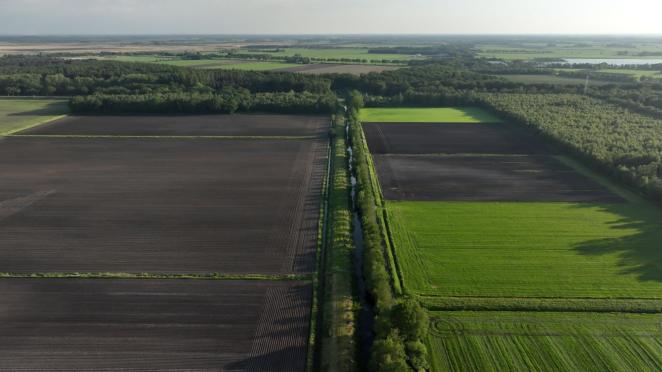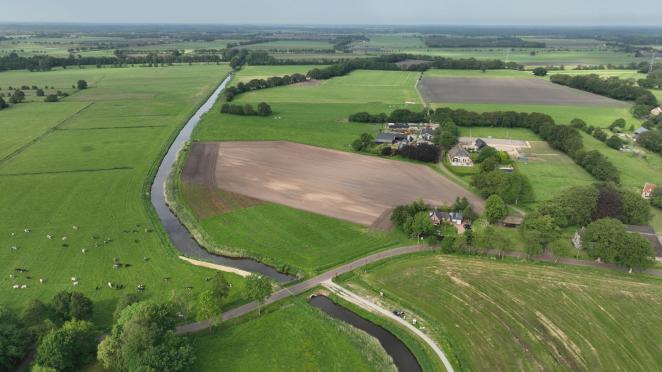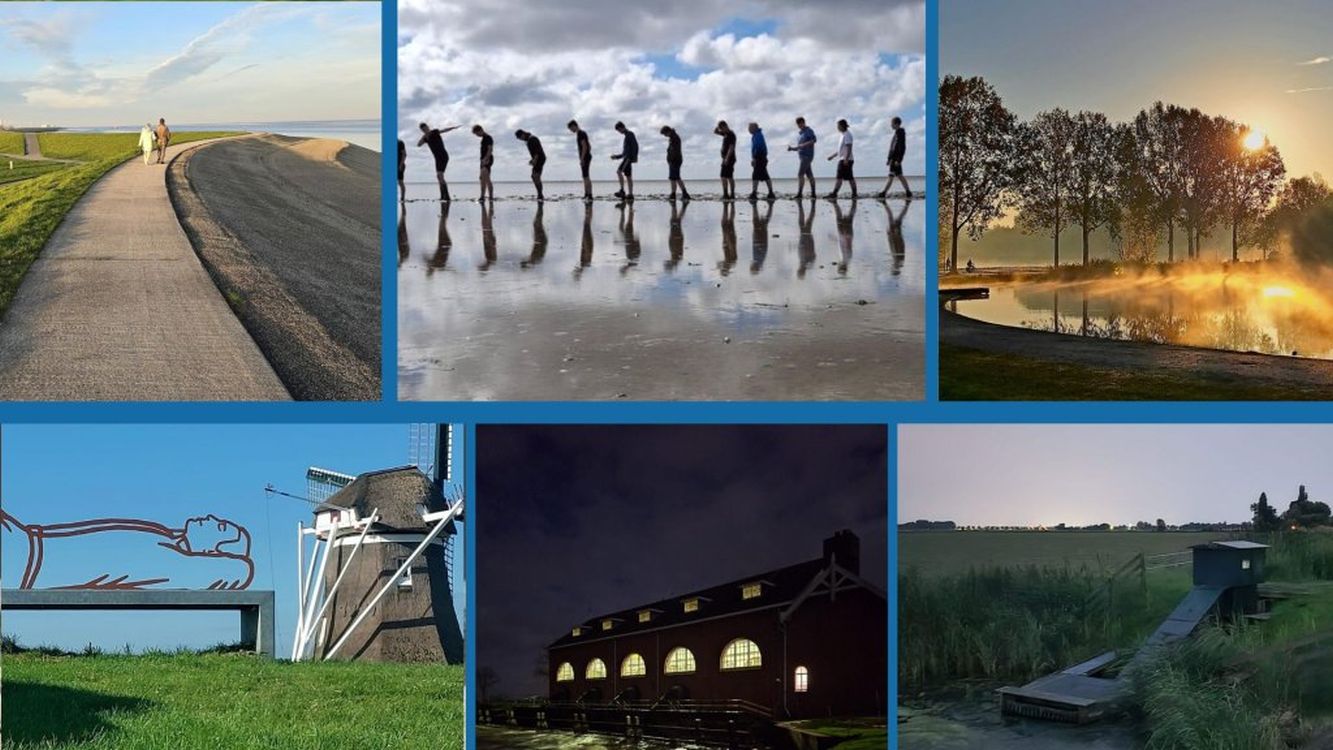A new study, carried out within the Interreg North Sea project Blue Transition, provides valuable answers on how more water can be made available for agriculture and nature during dry periods in the northern part of Drenthe in The Netherlands. The study examines which small-scale water system measures really contribute to water retention, the impact on land use, and the influence on the groundwater system.
These insights are crucial - forming a strong foundation for scaling up the lessons learned from the Blue Tranition pilot in Veenhuizen into a broader water retention programme across the entire region.

dronebeeld zesde wijk
Vital for Climate Resilience
In the area known as the Kop van Drenthe, securing enough water for both agriculture and nature is a vital part of climate resilience. That is why the Noorderzijlvest water authority, together with partners, is working on innovative solutions.
In Veenhuizen, practical trials have been running with measures such as farmer’s weirs and controlled drainage. But which measures are effective where? Because local conditions vary greatly, this effectiveness study was carried out – not just for the pilot area, but for the entire Kop van Drenthe.
Key findings of the study
The study shows that technical measures can make an important, yet limited, contribution to water retention. Some of the main findings include:
- Storage capacity: In theory, primary and secondary ditches (outside of water authority management) could hold between 4.8 and 5.1 million m³ of water. This may sound like a lot, but spread across the area it equals just 20 mm of water – roughly the amount that evaporates during five sunny days.
- Strongest effect in dry sandy soils: Here, measures raise groundwater levels and improve water availability at the start of the growing season. In peat areas and stream valleys, the effects are smaller.
- Hydrological recovery: Much of the additional water infiltrates into the subsurface, contributing to groundwater recharge, seepage, and the restoration of natural hydrological systems.
- Agriculture and nature: Overall, no major negative impacts are expected. While wet areas may face local challenges, drier areas are expected to benefit.
- Limited applicability: Not all measures are suitable everywhere, nor equally effective.

drone image Masloot Eelderdiep - bunnerveen
What does this mean for the future?
The study provides a practical guide to where technical measures can make a real difference in water retention. Noorderzijlvest and its partners intend to use these insights as part of a broader programme for water retention in the Kop van Drenthe.
At the same time, the findings underline that technical measures alone are not enough. Soil management and crop rotation are just as important to improve the sponge effect of soils in agricultural and natural areas. Together, these approaches strengthen resilience against climate extremes.

